This ranking is not in order but a short list of some of the most breathtaking villages Spain has to visit. Please feel free to suggest any others in the comments section!
1. Setenil de las Bodegas, Cádiz
Setenil de las Bodegas is a town (pueblo) in the province of Cádiz, Spain, famous for its dwellings built into rock overhangs above the Rio Trejo. According to the 2005 census, the city has a population of 3,016 inhabitants. It has an exact antipodal city: Auckland, New Zealand.
This small town (pueblo) is located 157 kilometres (98 mi) northeast of Cadiz. It has a distinctive setting along a narrow river gorge. The town extends along the course of the Rio Trejo with some houses being built into the rock walls of the gorge itself, created by enlarging natural caves or overhangs and adding an external wall.
Modern Setenil evolved from a fortified Moorish town that occupied a bluff overlooking a sharp bend in the Rio Trejo northwest of Ronda. The castle dates from at least the Almohad period in the 12th century. However, the site was certainly occupied during the Roman invasion of the region in the 1st century AD.
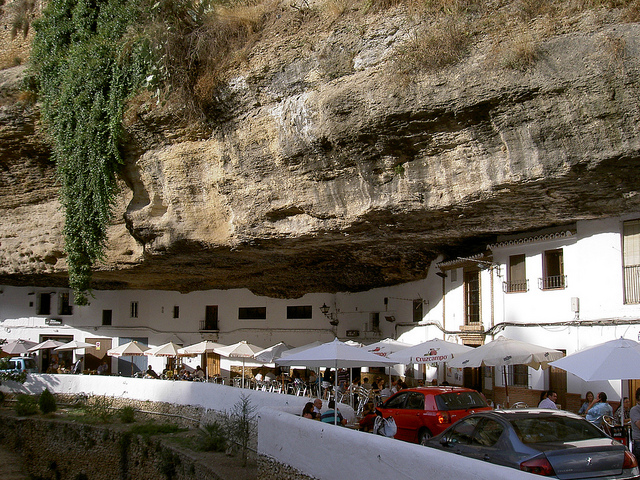
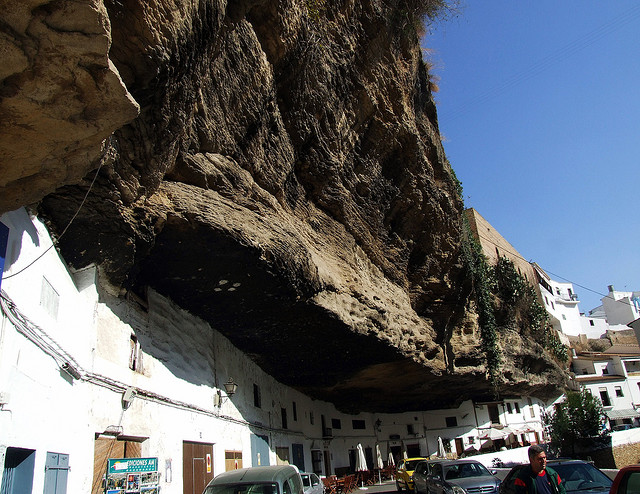
fotos - Jose Luis Sanchez Mesa
Ver mapa más grande
2. Besalú, Girona
Besalú is a town in the comarca of Garrotxa, in Girona, Catalonia, Spain.
The town's importance was greater in the early Middle Ages, as the capital of the county of Besalú, whose territory was roughly the same size as the current comarca of Garrotxa but sometimes extended as far as Corbières, Aude, in France. Wilfred the Hairy, credited with the unification of Catalonia, was Count of Besalú. The town was also the birthplace of Raimon Vidal, a medieval troubadour.
Besalú was designated as a historical national property ("conjunt històric-artístic") in 1966. The town's most significant feature is its 12th-century Romanesque bridge over the Fluvià River, which features a gateway at its midpoint. The church of Sant Pere was consecrated in 1003. The town features arcaded streets and squares and also a restored mikveh, a ritual Jewish bath dating from the eleventh or twelfth century, as well as the remains of a medieval synagogue, located in the lower town near the river. Besalú also hosts the Museum of Miniatures created by jeweller and art collector Lluís Carreras.

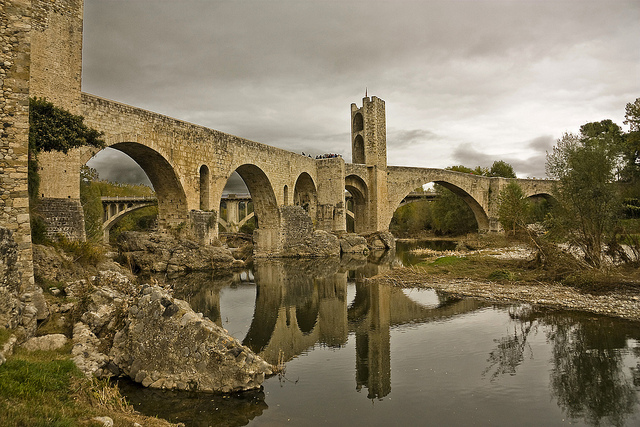
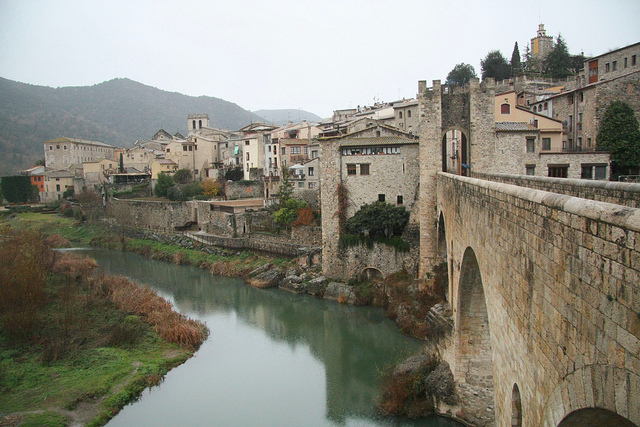
Photo : Jordi Paya
Ver mapa más grande
3. Casares, Málaga
Casares is a town and municipality in Spain, located in Málaga province, in the autonomous community of Andalusia.
In Roman times the spa of la Hedionda, located on the road to Manilva, was already well known, and this is where Julius Caesar supposedly was cured of a liver complaint, thanks to the sulfuric waters that still pour out of the local spring. For this reason that during the Roman Empire, Casares was allowed by emperors to mint its own coins.
The 12th-century Castle, around which grew the present town centre, was founded by the occupying Moors. In 1361, Peter I of Castile and the dethroned Muhammed V signed the Pact of Casares, by which the Moorish King recuperated his throne, leaving Casares as part of the Nasrid Dynasty. The town surrendered to the Catholic forces after the fall of Ronda in 1485 and was handed over to Rodrigo Ponce de León, Duke of Cádiz. Later during the Rebellion of the Moriscos, Rodrigo's descendent, the Duke of Arcos, accepted the surrender of the rebel Moriscos, the Moors who had "converted" to Christianity. Casares had taken an active part in the Morisco rebellion, put down by Don John of Austria. The town separated from Manilva in 1795, being granted the title of Villa. At a later period, Casares was the only town, apart from Cádiz, that the Napoleonic troops has not been able to take.
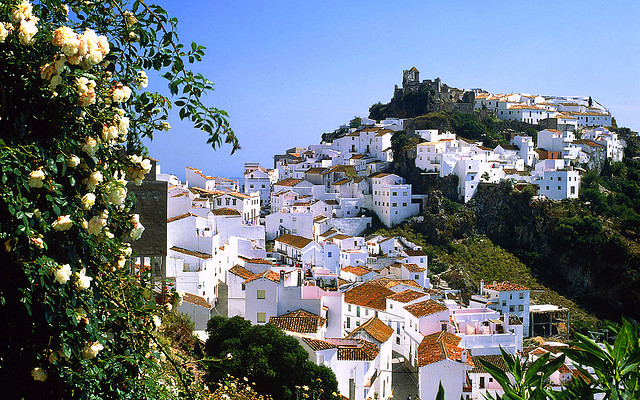
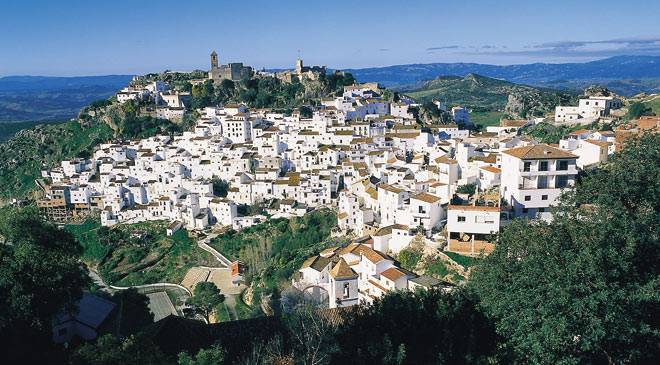
Photo : miquitos
Ver mapa más grande
4. Olite, Navarra
The sleek and harmonious silhouette of the Castle-Palace stands out against the skyline of Olite, a small town in the centre of Navarre just 42 kilometres south of Pamplona that was the seat of the Royal Court of the kingdom in the Middle Ages.
The thick walls and crenellated towers of the Palace were home to monarchs and princes. Declared a national monument in 1925, it is the best example of civil Gothic architecture in Navarre and one of the most notable in Europe.
A walk through the narrow streets of Olite will take you past noble stone houses with coats or arms on their facades and grandiose wooden eaves, mediaeval galleries and splendid churches, and the Roman wall surrounding the town.

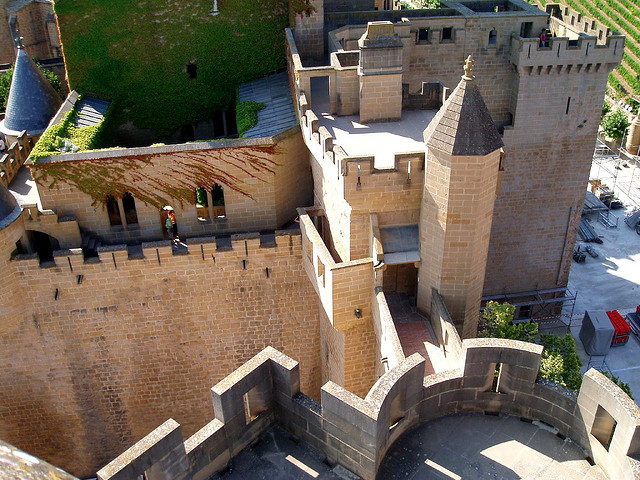
Photos : Hector Garcia
Ver mapa más grande
5. Ronda, Málaga
Ronda is a city in the Spanish province of Málaga. It is located about 100 kilometres (62 mi) west of the city of Málaga, within the autonomous community of Andalusia. Its population is approximately 35,000 inhabitants. Around the city are remains of prehistoric settlements dating to the Neolithic Age, including the rock paintings of Cueva de la Pileta. Ronda was however first settled by the early Celts, who, in the 6th century BC, called it Arunda. Later Phoenician settlers established themselves nearby to found Acinipo, known locally as Ronda la Vieja, Arunda or Old Ronda. The current Ronda is however of Roman origins, having been founded as a fortified post in the Second Punic War, by Scipio Africanus. Ronda received the title of city at the time of Julius Caesar.
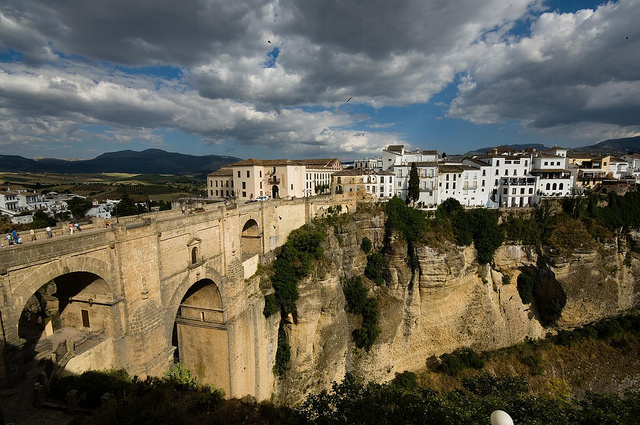
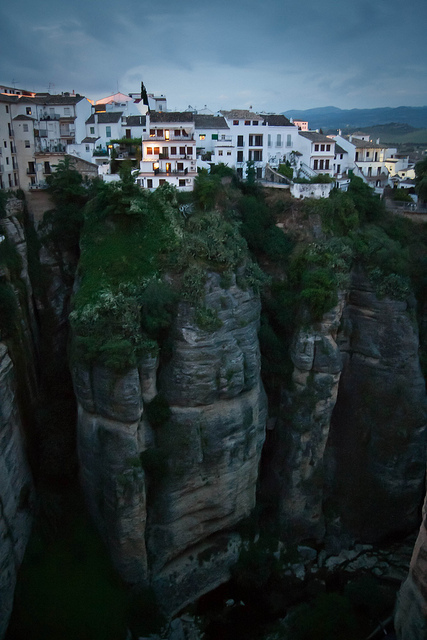
photos: Philip Capper / Thomas Fano
Ver mapa más grande
6. Albarracín, Teruel
Albarracín is in the province of Teruel, part of the autonomous community of Aragon. According to the 2007 census (INE), the municipality had a population of 1075 inhabitants. It is the capital of the mountainous Sierra de Albarracín Comarca. It is a picturesque town surrounded by stony hills and the town was declared a Monumento Nacional in 1961.
The town is named after the Moorish Al Banū Razín family that once dominated the area during the period of Muslim rule in the Iberian Peninsula. From 1167 to 1300, Albarracín was an independent lordship known as the Sinyoría d'Albarrazín which was established after the partition of the Taifa of Albarracín under the control of Pedro Ruíz de Azagra. It was eventually conquered by Peter III of Aragon in 1284, and the ruling family, the House of Azagra was deposed. The last person to actually hold the title of Señor de Albarracín was Juan Núñez I de Lara, although his son, Juan Núñez II de Lara continued on as the pretender to the title until 1300 when the city and its lands were officially incorporated into the Kingdom of Aragon.
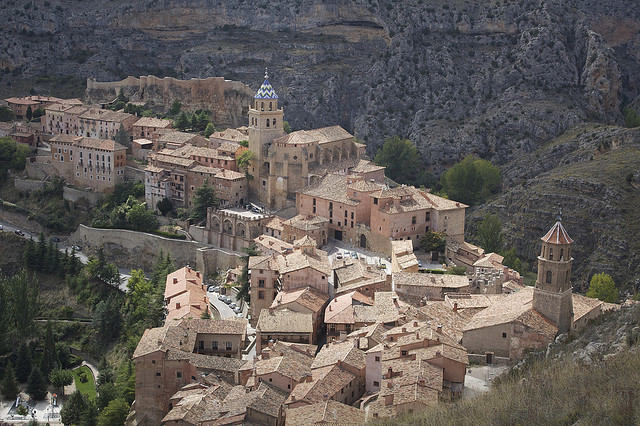
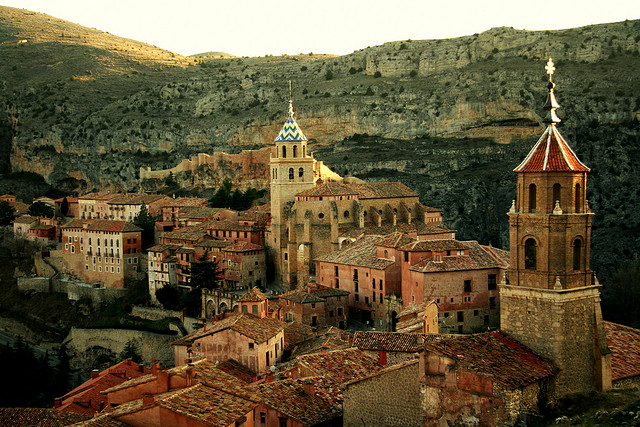
Photos : Alende Maceira / Orvalrochefort
Ver mapa más grande
7. Cadaqués, Girona
Cadaqués (Catalan pronunciation: [kəðəˈkes]) is a town in the Alt Empordà comarca, in the province of Girona, Catalonia, Spain. It is on a bay in the middle of the Cap de Creus peninsula, near Cap de Creus cape, on the Costa Brava of the Mediterranean. It is only a two-and-a-quarter hour drive from Barcelona, and thus it is very accessible and not only attracts tourists but people who want a second home for weekends and summers. In 2002, Cadaqués had an official population of 2,612, but up to ten times as many people can live in the town during the peak of the summer tourism season.
Salvador Dalí often visited Cadaqués in his childhood and later kept a home in Port Lligat, a small village on a bay next to the town. A summer holiday here in 1916, spent with the family of Ramon Pichot is seen as especially important to Dalí's artistic career. Other notable artists, including Pablo Picasso, Joan Miró, Marcel Duchamp, Richard Hamilton, Albert Ràfols-Casamada, Antoni Pitxot, Henri-François Rey, Melina Mercouri and Maurice Boitel also spent time here. Cadaqués is mentioned in the story "Tramontana" by Gabriel García Márquez.
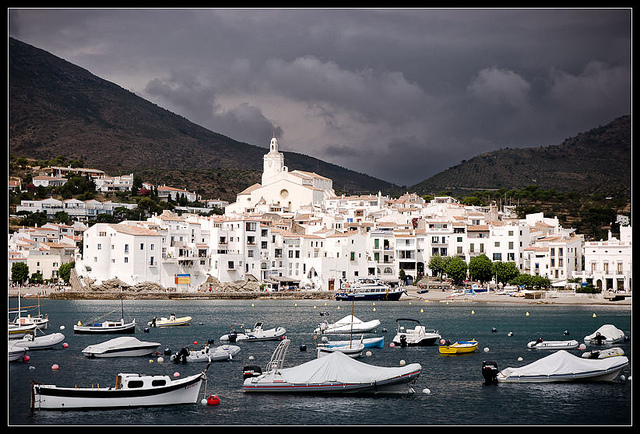
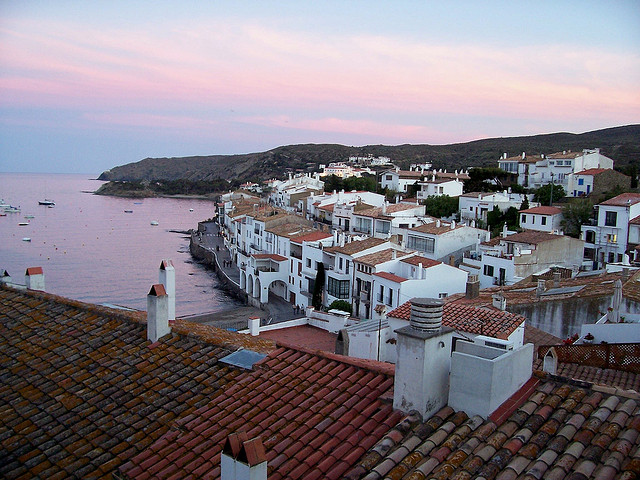
Photos : Joan ggk
Ver mapa más grande
8. Castellfollit de la Roca, Girona
Castellfollit de la Roca is a town of approximately 1,000 inhabitants in an area of less than a square kilometre, making it one of the smallest towns in Catalonia. This small urban area is bordered by the confluence of the Fluvià and Toronell rivers, between which the town's spectacular basalt cliff rises.
The sight of the church and the houses high on the edge of the basalt precipice has become one of the most photographed and painted images in Catalonia; it is also however a magnificent natural viewpoint overlooking the valleys of the two rivers.
The basalt crag where the town is situated is over 50 m high and almost a kilometre long and is the direct result of the erosive action of the rivers Fluvià and Toronell on the remains of the lava flows from the volcanic eruptions which took place thousands of years ago.
The lava, once solidified, became basalt, a hard rock which takes on different forms, depending on the cooling, contraction and splitting processes of the lava. The cliff is the result of two lava flows; the first took place 217,000 years ago and originated in the area of the village of Batet, and has formed slabs, the second, a more recent formation from the volcanoes of Begudà is 192,000 years old and has formed into prismatic shapes.
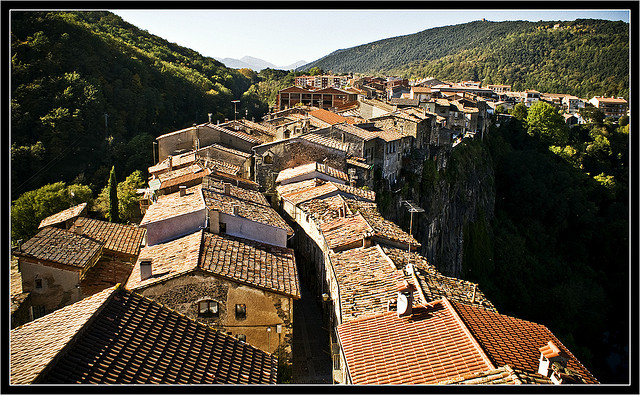
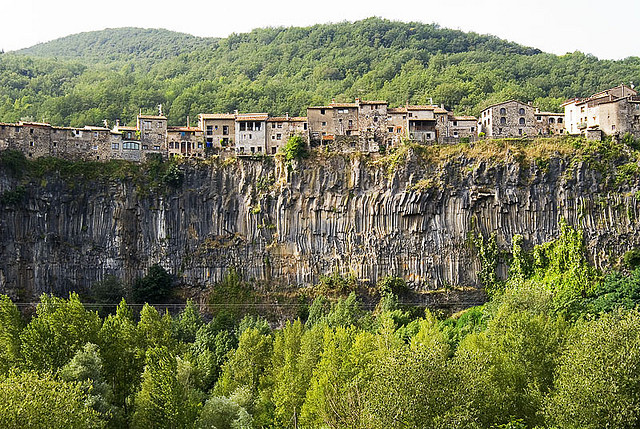
Photo : Ferrran Cerdans Serra / Wiros
Ver mapa más grande
9. Sallent de Gállego - Lanuza , Huesca
Sallent de Gállego is a municipality located in the province of Huesca, Aragon, Spain.
The town is located in the central Pyrenees beside the reservoir of Lanuza on the foot of some of the highest summits of the chain, close to the border with France. It is part of the Alto Gállego comarca, and it is the capital of the Tena Valley.
The Foratata peak (2,000 m) towers over the town, being an iconic peak for all of the valley. Other important summits belonging to the municipality are Anayet, Tres Hombres, Arriel and Balaitous, many of which are over 3000 meters high.
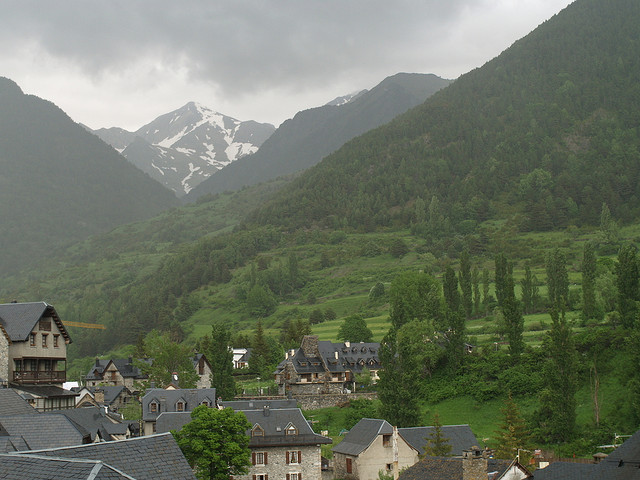
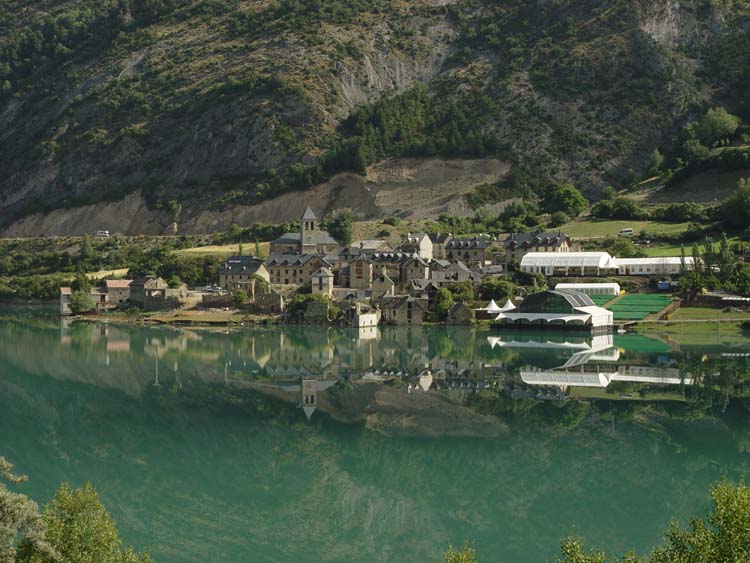
Photos: Pablo Ares Gastesi / Fernando
Ver mapa más grande
10. Cudillera, Principado de Asturias
Cudillero is a small picturesque village and municipality in the Principality of Asturias, Spain. These days, Cudillero's main economic activities are related to tourism, but it is also known for its fishing ships. A legend says that it was founded by the Vikings. People from Cudillero speak Spanish and a dialect called Pixueto.
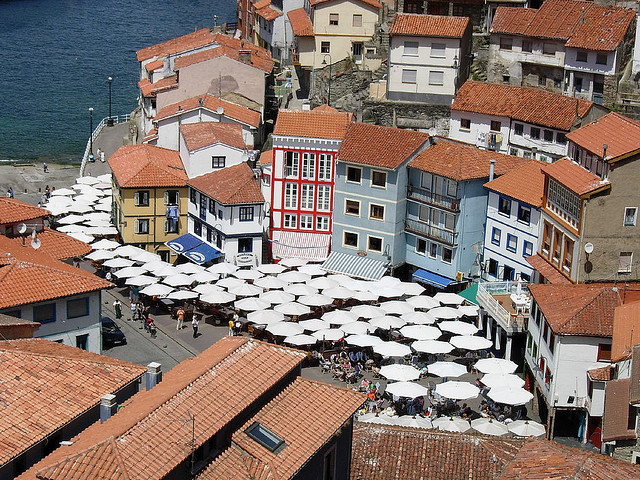
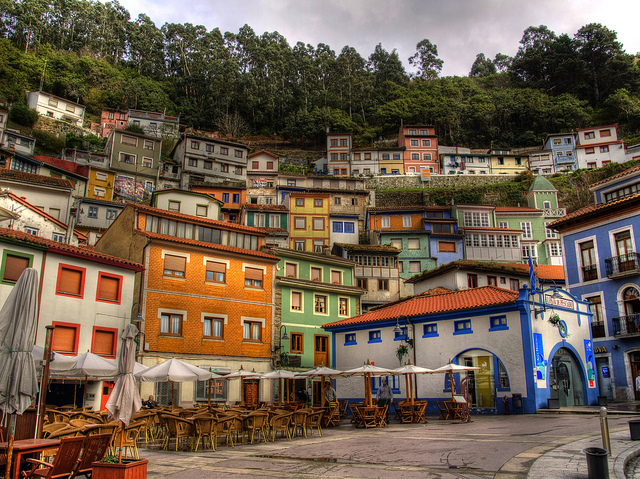
Photos : Javier Losa / Mario Sanchez Prada / Jose Luis Martinez / Guzman Lozano
Ver mapa más grande